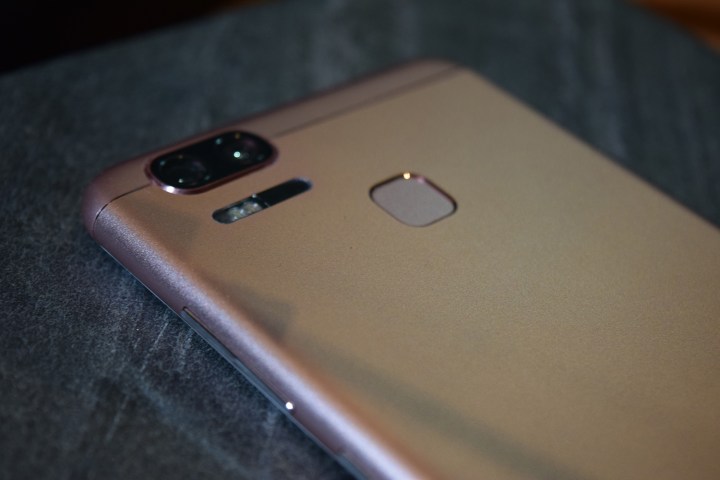Asus’ Zenfone 3 Zoom sports a dreamy camera and massive battery, making it one to watch.
If you want anyone to take notice of your smartphone at CES 2017, it needs to have two camera lenses. After the ZTE Blade V8 Pro and the Honor 6X comes the Asus Zenfone 3 Zoom, equipped with two 12-megapixel camera lenses for that sought after blurred-background “bokeh” effect, and an
Asus already has several Zenfone 3 spin-off phones — including the Max and the Laser — in its range, plus we’ve seen (and not been very impressed by) another Zenfone with an optical zoom in the past. What’s new with the Zenfone 3 Zoom, and should you pay any attention to it? We’ve tried it out to let you know. Here’s our first take.
You may think you recognize the design of the Zenfone 3 Zoom, and that’s because it really, really looks like an iPhone 7 Plus. Take away the fingerprint sensor on the back and replace it with an Apple logo, and it’s a lawsuit waiting to happen. The curvy metal body is very attractive and super comfortable in the hand; but that’s probably because the
Huge camera spec
The horizontally mounted dual cameras have 12-megapixel sensors made by Sony. One has an excellent f/1.7 aperture, and the other has a 2.3x optical zoom. Add in a digital zoom and the total becomes a 12x zoom. For comparison, the
Working the two lenses together produces the bokeh blurred background effect, which Asus also calls Portrait mode, just like Apple. With a technology called SuperPixel, Asus promises the camera will have great lowlight performance too, but it’s not something we could test in our short time with the device. The camera tech list goes on, with
At about 8mm thick, you’re probably not expecting the Zenfone 3 Zoom to have a massive battery. Amazingly, it has a whopping 5,000mAh cell, way bigger than almost every other
Not a flagship killer
Leaving aside the camera and the battery, the Zenfone 3 Zoom isn’t a flagship killer. It has a Qualcomm Snapdragon 625 processor, like the ZTE Blade V8 Pro and the Huawei Nova, but does pair it with 4GB of
While Asus has been quick to sing the Zenfone 3 Zoom’s photographic praises, it has been less forthcoming regarding the price, release date, and where the device will be sold. It’s apparently coming in February, but there’s no price attached, and based on previous Asus phones, it’s unlikely to be sold through carriers. We’d expect it to be sold unlocked online.
Before passing any judgement, we want to spend more time with the Zenfone 3 Zoom’s camera. If it’s as good as the spec promises, and the phone’s price comes in at a reasonable level — that’s less than $400 — it may be worth a look, especially due to the large battery. At the moment, we’ll say watch this space, but with interest.
Highs
- Impressive camera specs
- Massive battery
- Slick style
Lows
- No price yet
- ZenUI is intrusive
Editors' Recommendations
- The Zenfone 9 looks like the small 2022 flagship you’ve been waiting for
- Asus ROG Phone 3 vs. Nubia Red Magic 5G: Battle of the top gaming phones
- OnePlus 7T vs. Asus Zenfone 6 vs. ZTE Axon 10 Pro: Affordable flagship face-off
- The Asus Zenfone 6 goes its own way with flip-over camera and 5,000mAh battery
- Asus Zenfone 6: Key settings to change on your new phone








